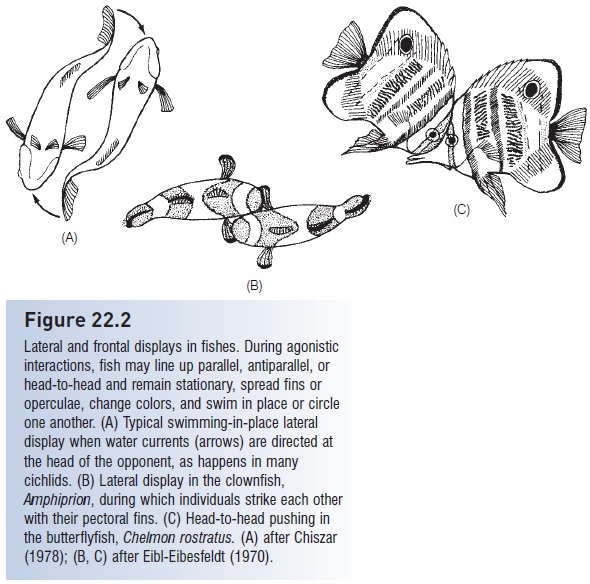Chapter: The Diversity of Fishes: Biology, Evolution, and Ecology: Fishes as social animals: aggregation, aggression, and cooperation
Tactile communication of Fishes - Fishes as social animals
Tactile communication
Tactile information is transmitted at close range, when fish are in contact. Accurate information about the relative strength of combatants can be exchanged during pushing matches or when fishes lock jaws during mouth fi ghting. Many fi ghts escalate into and end in biting. Anemonefish strike each other with their pectoral fins during antiparallel lateral displays (see Fig. 22.2). Fish frequently touch each other with tactile sensors, such as barbels in catfishes, loaches, and goatfishes, but also with long, filamentous pelvic fins (e.g., gouramis); searobins (Triglidae) have touch receptors in their separated anterior pectoral fin rays. Nuptial tubercles, epidermal bumps on the body and fins of many fishes, are used to stimulate potential mates and maintain contact between a pair during breeding. Courtship and copulation in many sharks involves biting of the female by the male; the male often holds onto the female’s fins or body for prolonged periods (Pratt & Carrier 2001).

Touching between fishes is fairly uncommon, except during extreme fi ghts, mating, and parent–offspring interactions. In parental species, young frequently contact the parent, usually using the mouth to feed on parental tissue or mucus. Such behavior also serves to maintain cohesion between parent and young, to promote parental behavior (perhaps by stimulating the production of parental behavior-inducing hormones), and to communicate the behavioral state of the young, such as fear or hunger. Parent-touching behavior occurs in bonytongues (Osteoglossidae), catfishes (Bagridae), damselfishes, and more than 20 species of cichlids (Noakes 1979).
Related Topics